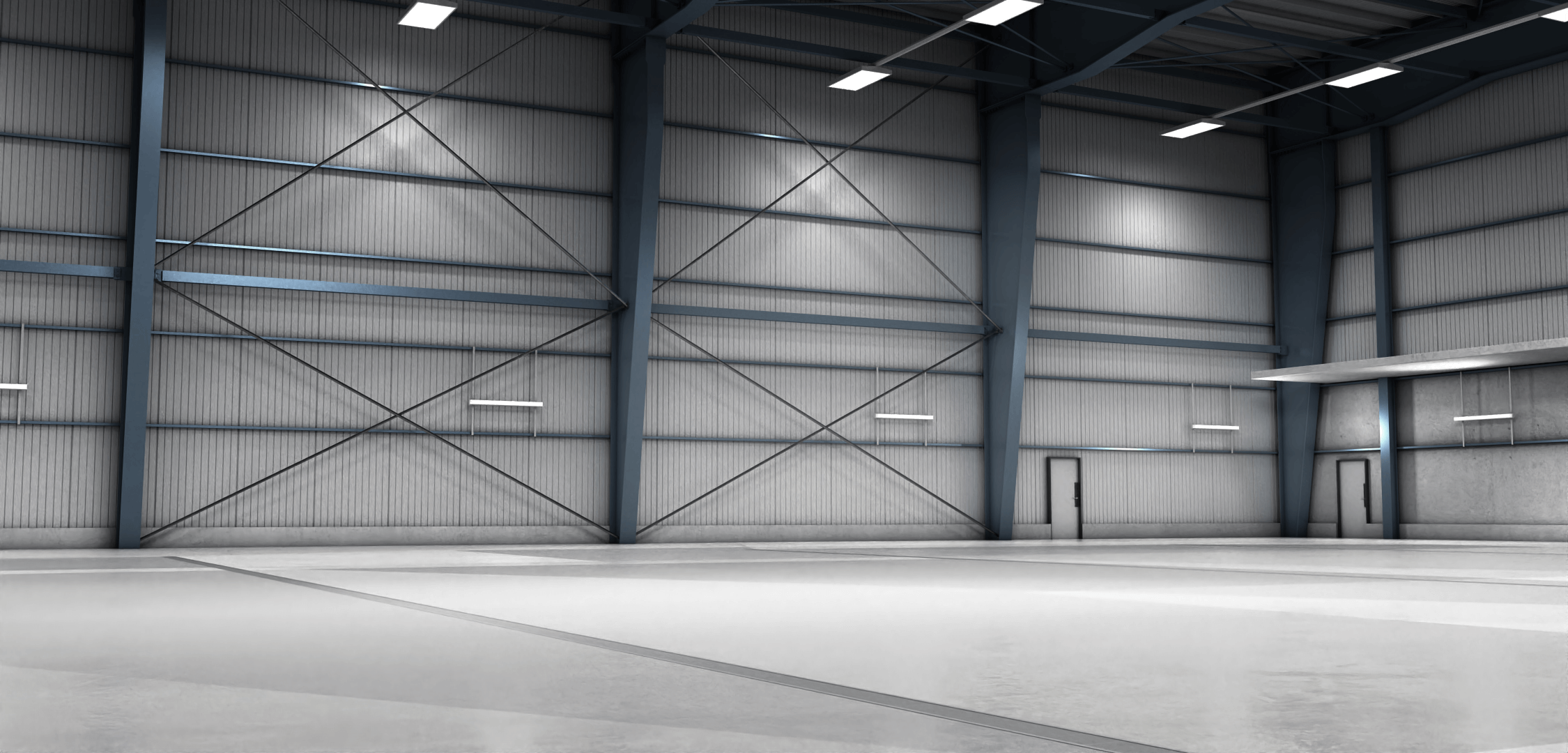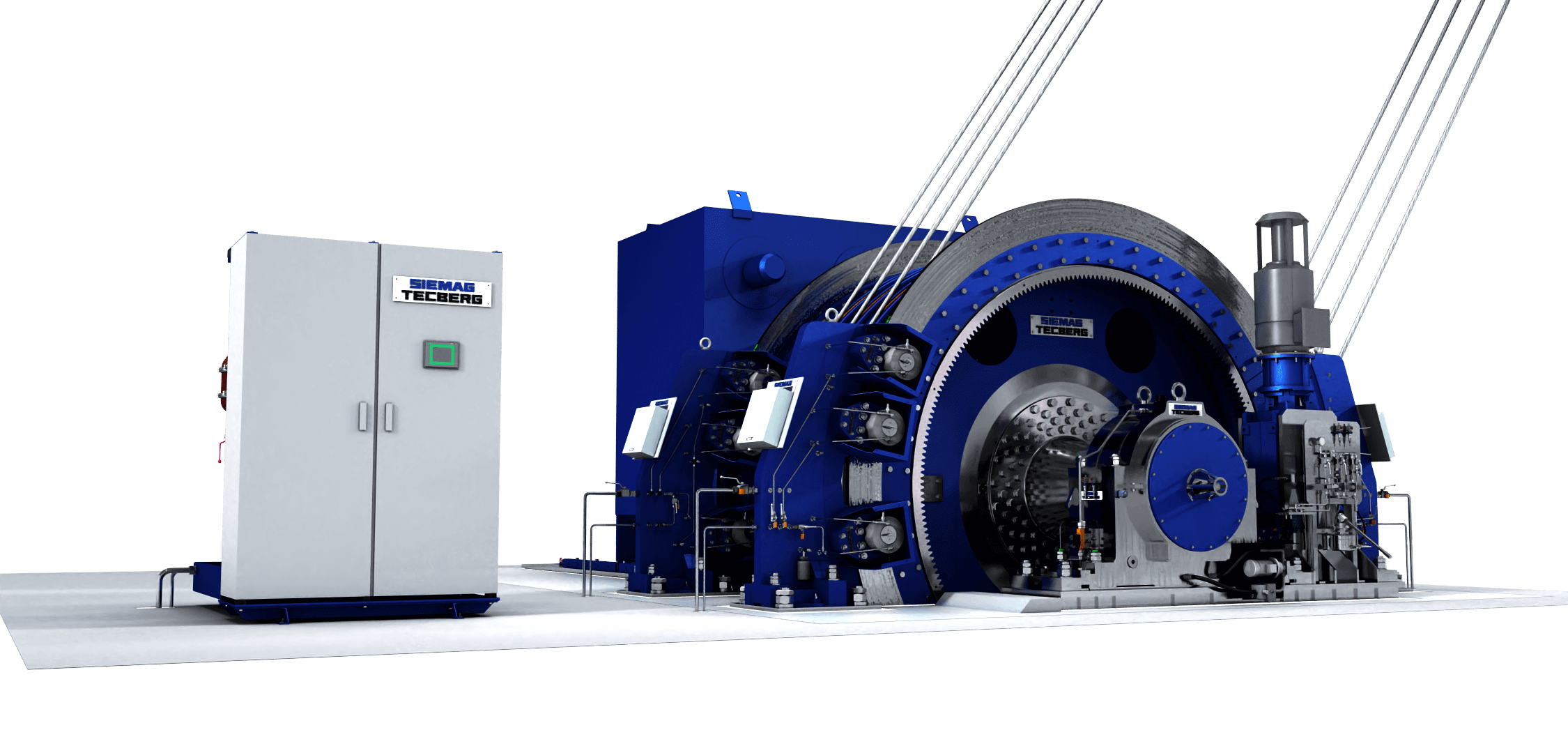Friction Winder for Shaft Konrad 1
2-Rope Friction Winder and further equipment
Customer
Federal Company for Final Waste Disposal (BGE)

Country
Germany
The Federal Company for Final Waste Disposal (Bundesgesellschaft für Endlagerung - BGE) is commissioned by the German state with tasks in the field of final disposal of radioactive waste. The federally owned company was founded for this purpose in July 2016. The new company was created through a merger of the repository divisions of the Federal Office for Radiation Protection (Bundesamts für Strahlenschutz - BfS) and the operating companies Asse-GmbH and German Company for the Construction and Operation of Waste Repositories (Deutsche Gesellschaft zum Bau und Betrieb von Endlagern für Abfallstoffe
- DBE).
Since April 2017, BGE has been the responsible operator of the German Konrad and Morsleben repository projects and the Asse mine. Other tasks include the search for a site for a final repository for highly radioactive waste in particular and the maintenance operation of the Gorleben mine. More than 2,000 BGE employees are currently working on repository tasks at seven sites.
Year of commissioning
2023
Material to be conveyed
Debris (dead rock) and man riding
Technical data
5 m
2
15 t
18,3 t
64,1 t
1.750 kW
16 m/s
10 m/s
4 m/s
1.232,50 m
Skip combined with 2 men-riding decks (16 persons per deck)
More information on the technology
The skip consists of two decks, with man riding only, a total of 32 people can be transported on the two decks per hoisting cycle.
Automation technology including the machine control.
2 hydraulic brake systems SB1 with electro-hydraulic brake control.
2023: Underground loading facility for the removal of debris for Konrad 1.
2023/2024: Complete reconstruction of the guide frame of the Konrad 1 shaft (south/north). The original guide frame was constructed as a sinking frame and continued to be used as a guide frame after completion of the sinking work. For the subsequent operation of the Konrad 1 North and South man riding, the old guide frame must be completely dismantled and a new guide frame installed.
Information on the project
In order to reduce the construction time for the new northern hoisting system, BGE has opted for a system design guided by 8 guide ropes for the new main man riding system of the northern conveying, which will consist of a 2-rope Koepe hoisting machine. The northern system is operated in single-compartment mode with counterweight. For this purpose, the northern half of the shaft must be rehabilitated, the guide frame in the surface area of the Konrad 1 shaft must be renewed and the steel guide ropes must be anchored at the bottom of the shaft.
A SELDA system (overwind and safety arrestor) is implemented as a safety device at the free height and at the free depth. As a conveyance, the BGE envisages a combination of a skip with a container for the transport of debris (dead rock) as well as two decks for man riding or transport.
The hoisting machine is floor-mounted in the newly constructed northern hoisting machine building. For the installation of the hoisting machine, 36 mounting holes were made in advance in the corresponding foundation in the hoisting machine housing north. They serve to anchor the Koepe winder. The installation of the hoisting machine took place under the management of SIEMAG TECBERG in March/April 2022. In later operation, the hoisting machine will realise a maximum payload of 15 t when conveying material. The skip consists of two decks, whereby the lower deck of the skip must be converted for material conveying.
With man riding only, a total of 32 people can be transported on the two decks per hoisting cycle. The maximum conveying speed for material conveying is 16 m/s, and 12 m/s for man riding. The traction sheave of the new hoisting machine has a diameter of 5 m and is connected to the machine shaft by means of HV screw connections. The machine shaft is supported on two plain bearings, one non-locating and one locating. The oil supply to the two bearings is placed in the basement of the hoisting machine building. In addition to the circulating oil lubrication, both bearings have a hydrostatic start-up aid, which serves to reduce the bearing wear. The two brake discs of the hoisting machine are bolted to the traction sheave on the front side. The total of eight pairs of brake generators are mounted on four brake posts that enclose the brake discs from both sides. The braking force is generated by means of disc springs and transmitted to the brake discs. The brake shoes are released hydraulically.







